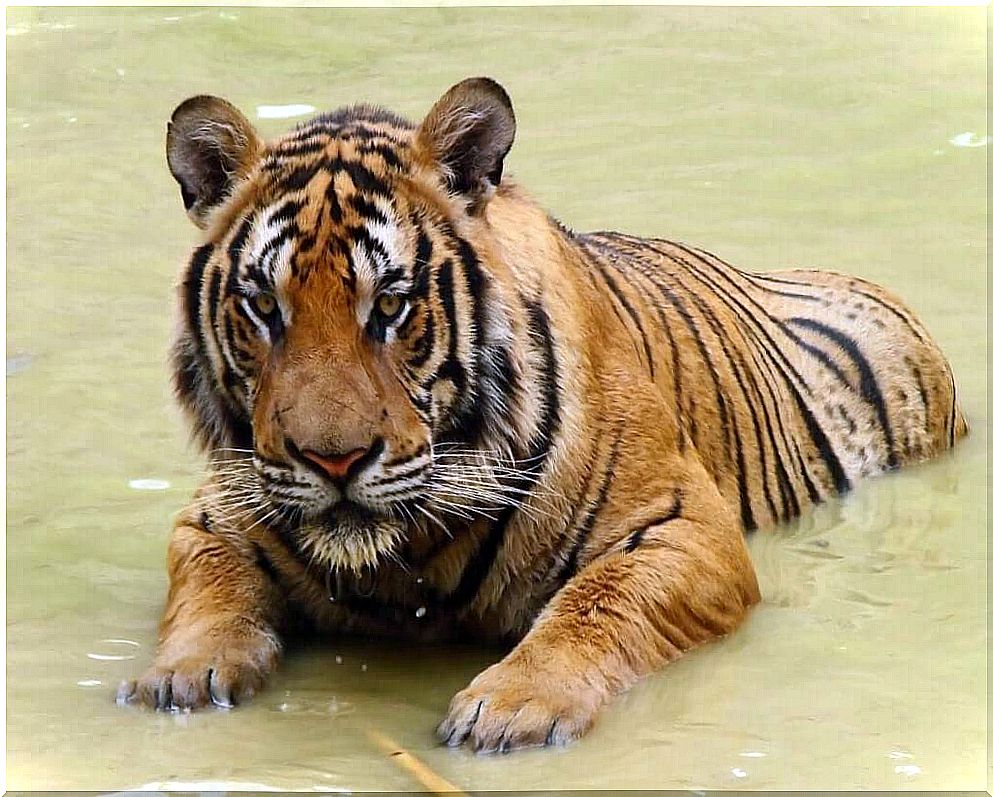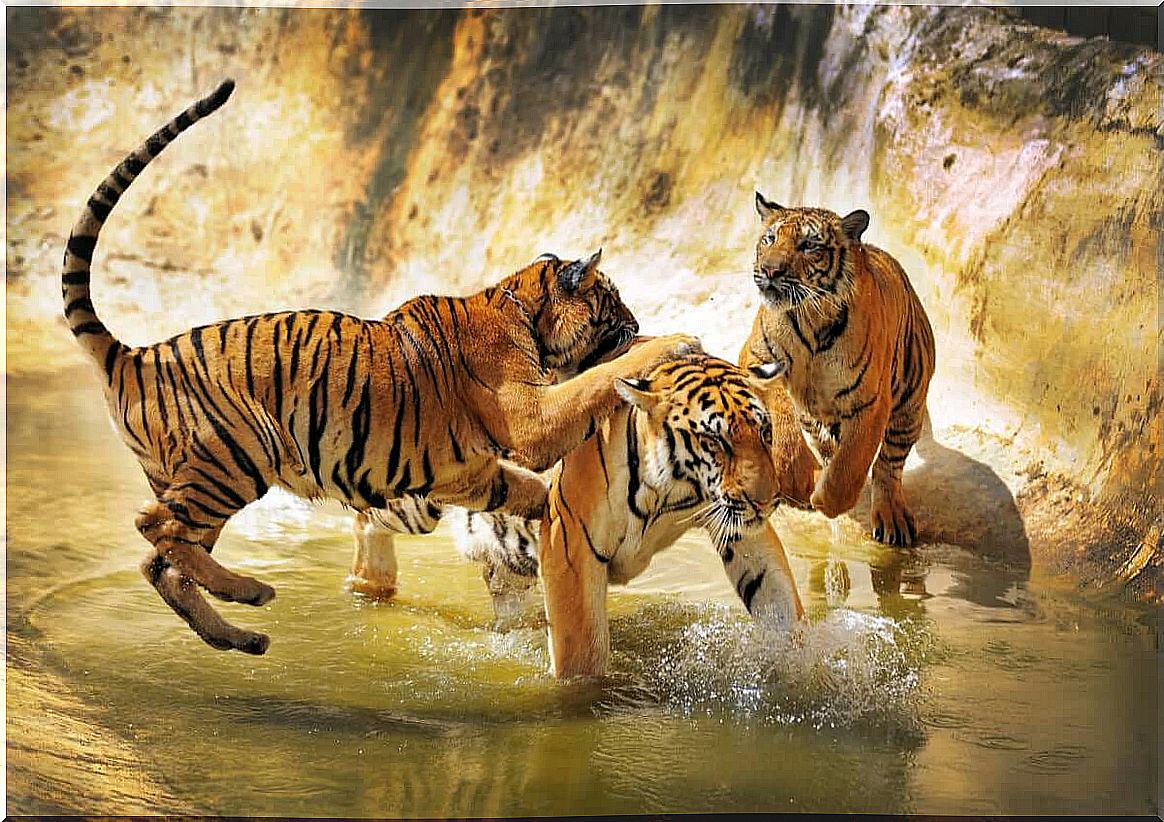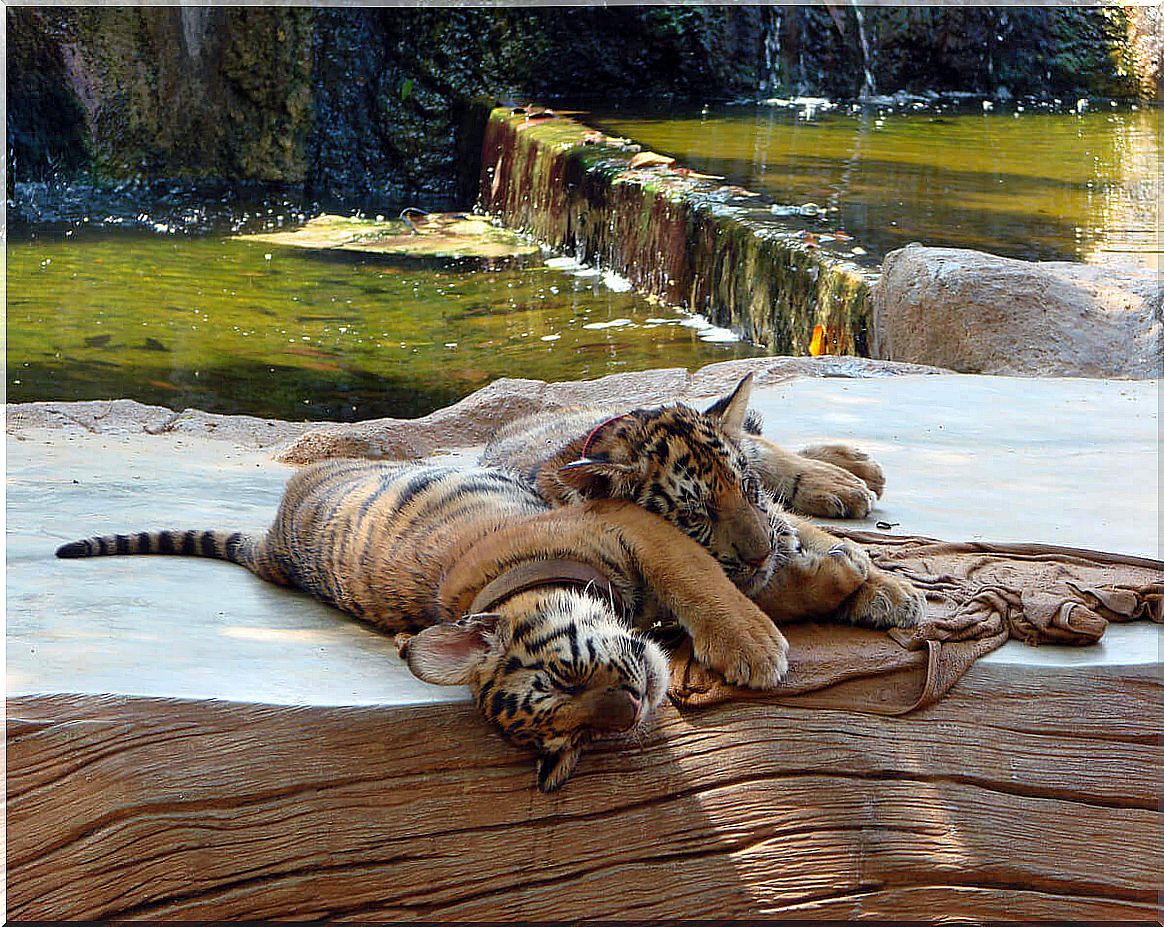Southern Chinese Tiger: A Majestic Cat On The Edge Of Disappearance

Many of the big cats are categorized as endangered species, but for some species the situation is even more worrying. The South China Tiger is one of the most endangered tiger subspecies in accordance with the International Union for Conservation of Nature (IUCN), as it currently is in critical danger of extinction.
Despite anecdotal reports from peasants, scientists believe that this feline is possibly extinct in the wild, and the individuals that have survived are in captivity, with a very small total population.
The original habitat of the southern Chinese tiger
The first specimen of a southern Chinese tiger was described in 1905 by zoologist Max Hilzheimer in Hankou, a province in southern China. Its appearance was very similar to the Bengal tiger, but with a slightly smaller bearing.
Their original habitat was forests with dense vegetation cover, where their prey was abundant: wild boar, hares, peacocks, deer and porcupines. As human settlements began to invade its territory, the southern Chinese tiger began to feed on livestock, causing its decline.
Their distribution was quite wide, as these tigers occupied more than 2000 kilometers in length distributed from east to west and from north to south across southern China, but the destruction of their habitat and the hunting of these animals reduced their population in large proportions.

The causes of its disappearance
For a long time, these cats were considered a pest and the Fujian provincial government ordered them to be eradicated. This meant that of the 4000 specimens estimated in 1959, around 200 remained in 1977, the year in which the hunting order was revoked.
Currently, its representatives survive in zoos and, therefore, it is estimated that only 1% of the original population remained. Inbreeding – reproduction among relatives – is high and there are crosses with other subspecies. This means that the genetic variety is very poor, which makes it very difficult to fully recover as a subspecies.
In 1981, the southern Chinese tiger was classified as an endangered subspecies by the CITES convention , and seven years later it was included in the Chinese government’s list of protected animals. At the Canton Zoo, the cells of this feline began to be preserved to prevent its permanent disappearance, which is estimated in the short or medium term.
Organizations such as “ Save China’s Tigers ” and “Chinese Tigers South Africa” have teamed up to send ten captive specimens to a special enclosure in South Africa, where the aim is to prepare them for reintroduction into their original habitat. In this enclosure, animals are trained to survive in a wild environment.
Its rediscovery in freedom would place the South Chinese tiger in the list of the ten animals most at risk of disappearing from the planet, as it would occupy the first place among the most endangered cats in the world, ahead even of the lynx. Iberian.
What is the South China Tiger like?
This is one of the subspecies that retains the most primitive traits within the tiger family, as its bodily characteristics resemble the common ancestor of these cats, who lived at the end of the Pleistocene in southern Siberia.
It is a small tiger, measuring about 2.4 meters from head to tail. Males can weigh around 170 kg and females around 120 kg. Its coat is bright orange, with fewer white areas than other tiger subspecies. It also has fewer black stripes, which are spaced farther apart than other tigers.
The tiger, the most endangered feline of all
Big cats occupy the highest place in the food chain because they are the most powerful living beings on the planet. However, for that reason, they are also the most vulnerable.
The disappearance of their habitat and poaching are their greatest threats. Many species, such as the southern Chinese tiger, are reduced to zoos, where attempts are made to recover their population numbers through captive breeding and reintroduction.
The tiger is the most endangered of the big cats, as its population has shrunk by 95% in the last century. It occupies only 7% of its historic territory and its total number is in continuous decline. At the beginning of the 20th century, it was estimated a population of 100,000 individuals and, currently, this number does not reach 4000.

So, as we can see, the data is really alarming for the species. If threats are not stopped in time and investments are not made in their conservation, many tiger subspecies will soon become extinct.









